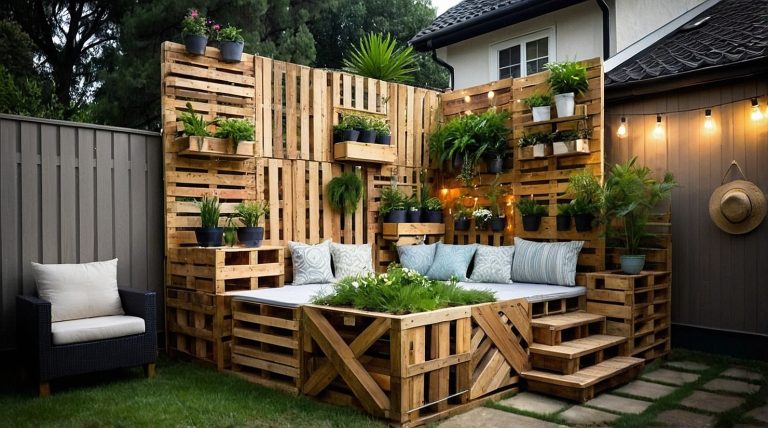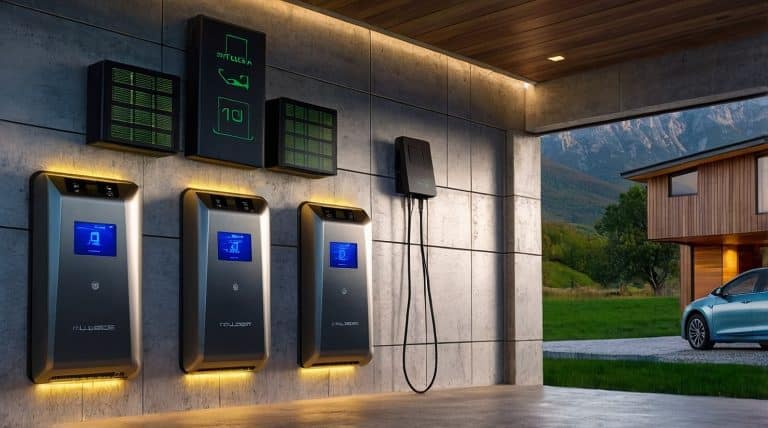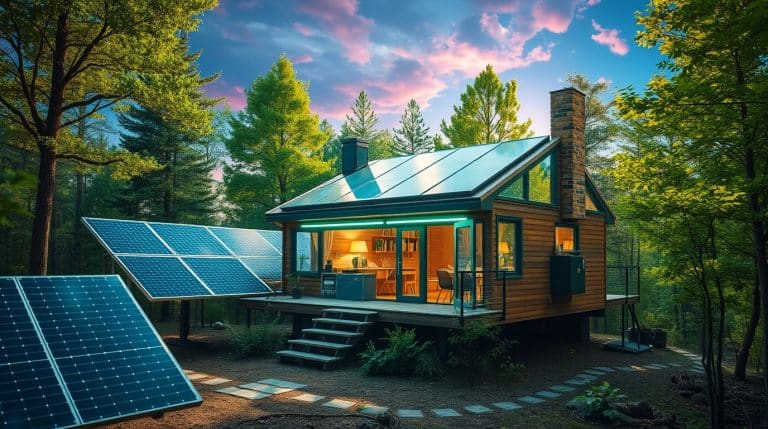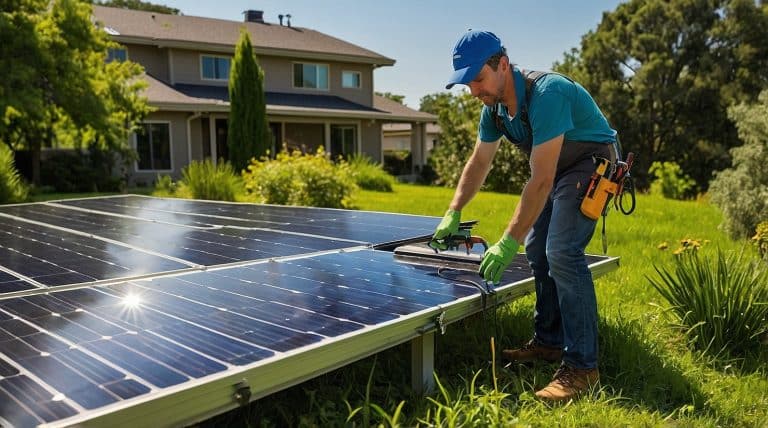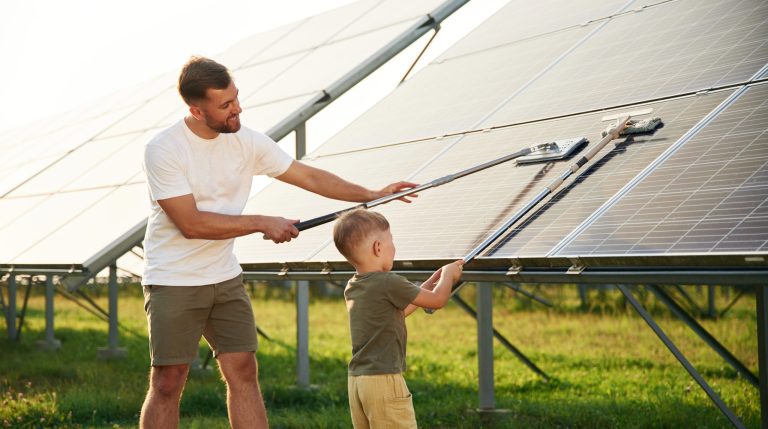Best Home Wind Turbine: Top 5 Models for Clean Energy
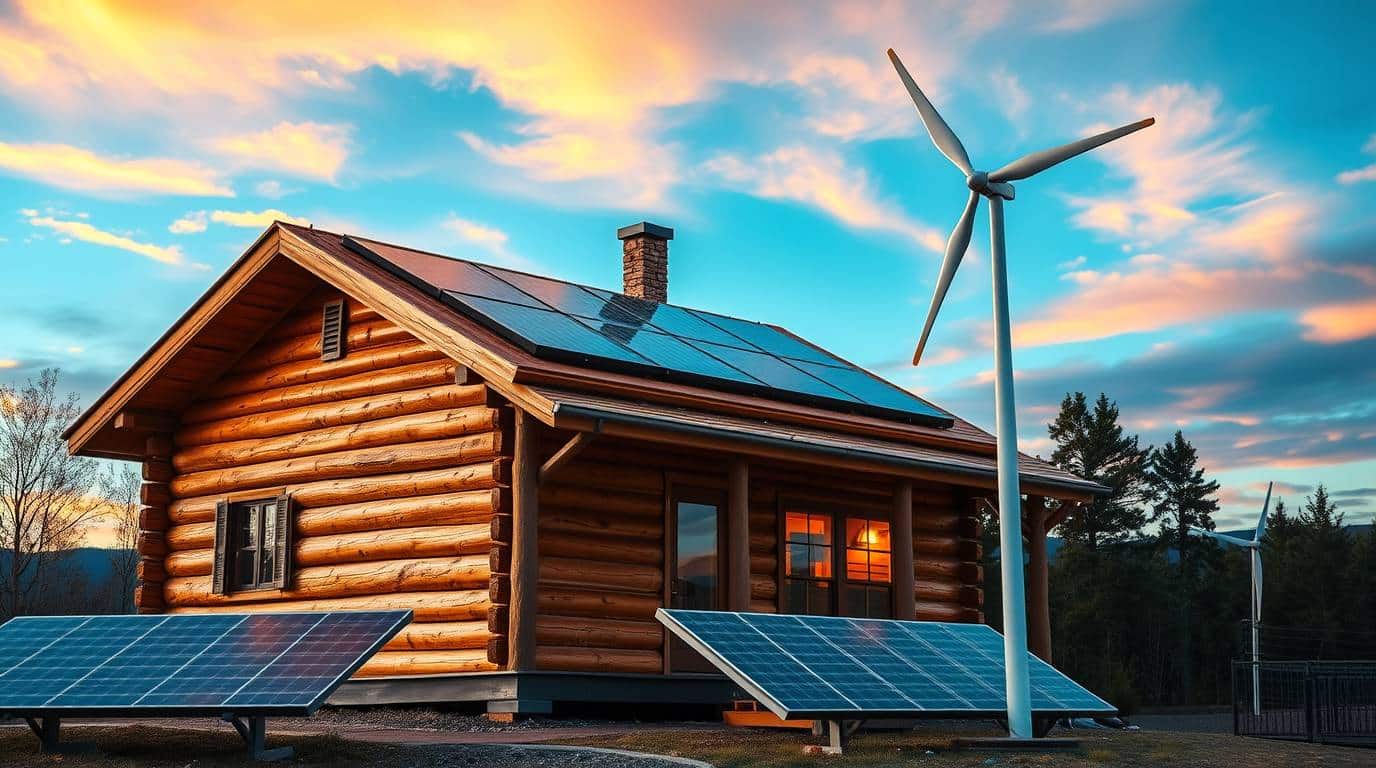
When I think about the idea of moving completely off-grid, I can’t help but worry about a couple of things. One of my main concerns is whether I’ll be able to keep my home warm in the winter and cool in the summer. Also, I find myself a bit anxious about the big lifestyle changes that might come with this decision. But more than anything, I keep circling back to one major question—how will I generate electricity to power everything I need?
Like many people looking to achieve energy independence, I’ve spent hours researching different renewable energy options. While solar panels seem like the obvious choice, I’ve realized that relying on just one power source might not be the most cost-effective solution. What happens during long stretches of cloudy days? That’s where a wind turbine can make all the difference. By capturing wind power, I can supplement my energy production and create a more balanced hybrid system that keeps my lights on no matter the weather.
First Things First: Is a Wind Turbine Right for You?
Before anything else, you will want to know for sure is a wind turbine is right for you, and picking the best wind turbine for an off grid home setup isn’t as simple as buying the first model you see online.
There are key factors to consider—like wind speed, turbine output, and whether a vertical axis wind turbine (VAWT) or a horizontal axis wind turbine (HAWT) would work best for your property. Not to mention the installation costs, maintenance, and making sure my area has a good wind resource to generate enough electricity.
If you are considering small wind turbines to reduce your electricity costs, understanding how small wind systems work and selecting the most efficient wind turbine for your energy needs is important. By the end of this post, you’ll have a clear idea of whether residential wind power is right for you and how to maximize your turbine output to get the most from your initial investment.
Ideal Locations for Home Wind Turbines
One of the first things I learned when researching residential wind power is that location matters—a lot. Even the most efficient wind turbine won’t do much if it doesn’t have enough wind to keep its spinning blades moving. The best setups take advantage of steady, unobstructed wind power, which is why you’ll see most small wind systems in open rural areas rather than in crowded suburban neighborhoods.
For a home wind turbine to work efficiently, your area should have an average wind speed of at least 10 miles per hour. Anything less, and you might struggle to generate electricity consistently. Detailed wind resource maps can help evaluate your location’s potential for wind energy capture.
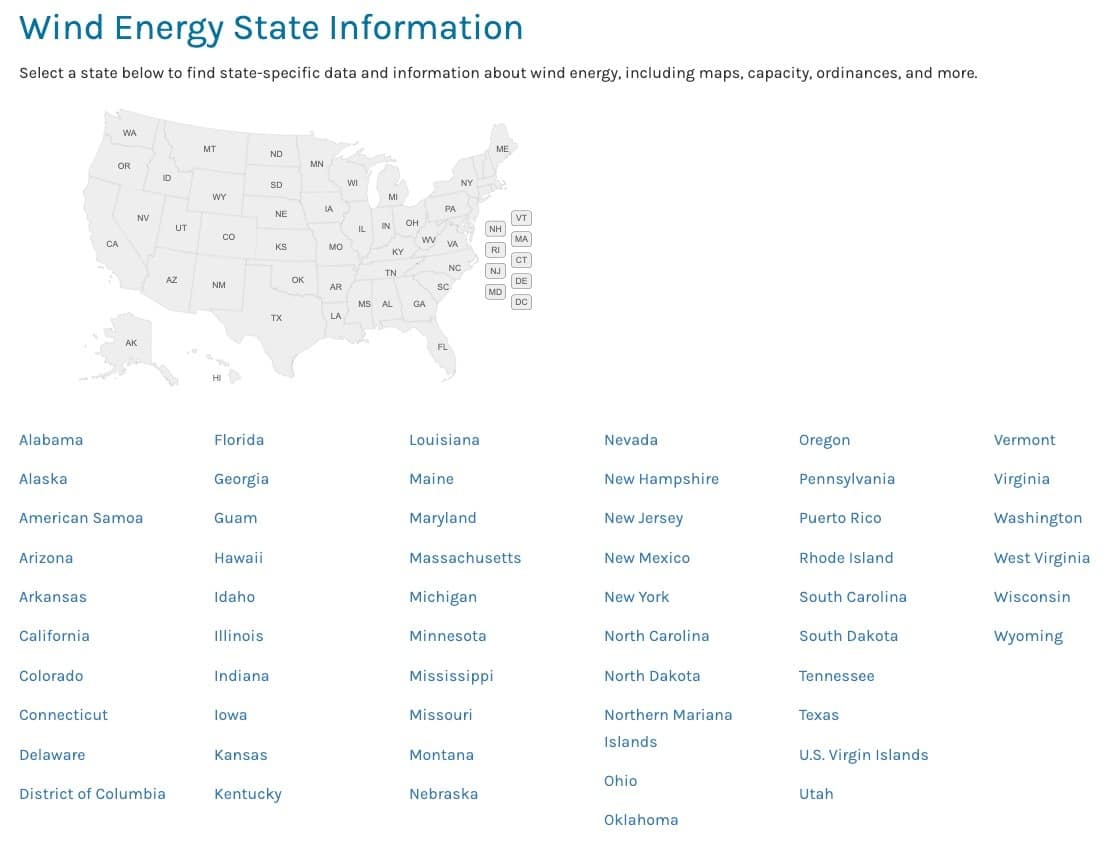
That said, not every property is ideal for small wind turbines. If you live in a heavily wooded area, a dense neighborhood, or anywhere surrounded by tall buildings, turbulence and blocked wind flow can significantly reduce power output.
In cases like this, a vertical axis wind turbine might be a better fit, as it handles turbulent winds better than a horizontal axis wind turbine. However, these models typically come with a limited power output, meaning you may need more solar panels or another backup system to meet your renewable energy needs.
Before investing in a home wind turbine, take the time to assess your wind conditions. If your location has higher wind speeds, your turbine output will be more reliable, making your initial investment more cost-effective in the long run.
Sizing Your Home Wind Turbine System
Figuring out the right size for a home wind turbine isn’t just about picking the most efficient wind turbine on the market—it’s about matching your energy consumption with the power output your system can provide.
If your goal is energy independence, you need to ensure your turbine can consistently generate electricity to cover your household’s needs. This starts with an energy audit to calculate how much power you use daily and how much a turbine can realistically produce given your local wind conditions.
Most small wind turbines are measured in kilowatts (kW), and for homes, you’ll usually find options ranging from 1.5 kW to 10 kW. Choosing the right size for you really depends on a few factors, like how windy it usually is in your area, the height of your turbine, and whether you have a good wind resource to keep things running smoothly.
For example, a 5 kW wind turbine can generate about 8,000 kilowatt-hours each year! That could cover part of your energy needs or even all of them, depending on your electricity costs and how much energy you typically use.
Cost Considerations for Small Wind Turbines
When I first started looking into small wind turbines, one thing became immediately clear—the initial investment isn’t cheap. A home wind turbine can range from a few thousand dollars for a small wind system to tens of thousands for a setup that can generate enough electricity for an entire homestead.
Since every watt counts when you’re producing your own electricity, choosing the most efficient wind turbine for your energy needs is key to making the investment cost-effective in the long run. Beyond the upfront costs, keeping a wind turbine running smoothly requires regular maintenance.
Spinning blades, electrical connections, and lead-acid batteries all need periodic checks, and wear and tear can add up in areas with strong winds.
To ensure a reliable power output, many off-gridders pair their wind power system with solar panels or a hybrid system to compensate for limited power output during low wind conditions. For those in areas with higher wind speeds and a good wind resource, a small wind system can provide a significant portion of household energy, reducing energy costs and ensuring true energy independence year-round.
Wind vs. Solar: Weighing Your Options
Living off the grid and relying on a single energy source can be risky. A hybrid system combining wind power and solar panels creates a more reliable power output, ensuring energy independence year-round.
Think of it like a hybrid car—having two sources of renewable energy improves overall efficiency. While both small wind systems and solar setups provide clean power, each has distinct advantages depending on wind conditions, sun exposure, and energy needs.
A solar panel system with battery storage is excellent for steady power generation, especially during the day, while a wind turbine can generate electricity at night or during storms when more wind is present.
If you live in an area with strong winds, wind power can really pay off! In fact, a wind turbine can sometimes produce more electricity than solar panels, depending on the weather. Many off-grid homeowners love to combine both wind and solar energy. This clever combo not only cuts down on electricity costs but also helps them make the most of their energy use!
When choosing between solar panels and the best home wind turbines, it’s important to consider factors like your wind resource, the layout of your property, and how much energy you use. Modern wind generators can actually produce more electricity than similar solar systems, especially if you live in a place with consistent strong winds.
It’s all about finding what works best for you and your home! Additionally, small wind turbines operate in a variety of weather conditions, including cloudy days and nighttime, offering reliable power output when properly installed.
Ultimately, your local climate, seasonal variations, and energy goals will determine the best system for your off-grid setup. If your property has a good wind resource, investing in small wind technology could provide a cost-effective way to cover a significant portion of your home energy needs.
Understanding how both wind energy systems and solar power work will help you create the most efficient and reliable setup for off-grid living.
Harnessing the Wind: How Home Wind Turbines Work
The best home wind turbine functions similarly to commercial wind farms, just on a smaller scale. These residential wind generators convert natural wind energy into usable electricity through sophisticated turbine technology. Your wind speed requirements typically start at 7-10 mph for optimal performance.
The Anatomy of a Turbine
High-quality residential wind turbines feature precision-engineered parts. The rotor’s two or three aerodynamic blades capture wind energy, creating rotational force. This movement drives the wind generator housed in the nacelle alongside essential components like gears and braking mechanisms.
Most of the best home wind turbine models include a tail vane that automatically orients the system to maximize wind speed capture. The sophisticated engineering of these wind energy components ensures optimal performance across varying wind speed conditions. Modern residential wind generators incorporate advanced materials like carbon fiber composites and aircraft-grade aluminum, significantly improving durability while reducing maintenance needs.
The best home wind turbine designs also feature smart monitoring systems that track performance metrics, automatically adjust to wind conditions, and implement safety measures during extreme weather events. These technological advancements have made residential wind power increasingly reliable and efficient for homeowners seeking sustainable energy solutions.
Tower Height: A Critical Factor
The best home wind turbine performance correlates directly with tower height, influencing both turbine power output and overall system cost. Elevated installations capture stronger wind patterns, dramatically improving your annual energy production. Investing in proper tower height ensures your wind turbine generator kit operates at peak efficiency, often doubling or tripling wind turbine power compared to shorter installations.
Professional wind energy assessments analyze your site’s specific conditions to optimize residential wind performance. Keep in mind that maximizing wind turbine power through taller towers requires additional permits and structural support.
While this affects your initial wind turbine cost, the increased annual energy production from the best home wind turbine installations typically justifies the investment. Most residential wind generator setups achieve optimal performance at heights between 80-120 feet, where they can access cleaner, more consistent airflow for reliable power generation.
What About Local Zoning Laws?
Installing the best home wind turbine involves more than just selecting the right equipment; it also requires navigating local zoning laws. Many areas have specific regulations about the height, placement, and operation of residential wind power generators. For instance, some municipalities may restrict tower heights or require a minimum distance from property lines to ensure safety and aesthetic standards.
Before purchasing or installing a wind turbine, consult your local government’s zoning office to determine what’s allowed in your area. Height restrictions are a common hurdle for residential wind turbines. Many efficient turbines require tall towers to maximize exposure to consistent wind speeds.
For example, an 80-foot tower may be necessary to harness optimal wind energy in rural locations. However, urban or suburban areas often impose height limits to prevent obstruction of views or interference with neighboring properties. Understanding these limitations early will save you time and money in your journey toward generating clean energy.
Tools like the American Planning Association’s Wind Energy Guide can provide helpful insights into zoning trends and regulations. In addition to zoning laws, consider how a wind turbine might integrate with other energy systems like solar panels. A hybrid system combining solar and wind energy can enhance your power output and reduce dependency on traditional grids.
However, the integration of multiple systems may require additional permits or approvals. For further guidance, platforms like Energy.gov offer resources on combining power generators for maximum efficiency while adhering to local codes. Planning ahead ensures compliance and sets you up for a successful transition to renewable energy.
Determining Your Wind Energy Requirements
Understanding your power needs is crucial when selecting the best home wind turbine for your property. While the average US home consumes approximately 10,649 kWh annually, turbine wind systems vary in their generation capacity. A smaller residential wind setup might supplement rather than replace your grid connection.
Large wind systems ranging from 5-15kW, combined with battery storage, can significantly offset or eliminate your electric bills. The best home wind turbine for your situation depends on several factors, including your solar wind hybrid potential and property characteristics.
When considering turbine wind power, remember that larger systems deliver more annual output but require specific wind conditions and proper spacing. Your local wind patterns, energy consumption patterns, and utility rates will help determine whether a small or large wind system best suits your needs.
Costs of Building a Home Wind Turbine
Revisiting the subject of cost, selecting the best home wind turbine requires careful financial planning and consideration of multiple factors that influence your total investment. Installing a home wind turbine isn’t cheap.
What Drives Costs?
Initial wind turbine cost varies significantly based on your energy needs and system specifications. The best home wind turbine systems typically range from $3,000 to $5,000 per kilowatt of generating capacity. However, residential wind power involves more than just the turbine purchase – you’ll need to account for wind generator installation, tower construction, permits, and grid interconnection fees.
Modern wind energy systems often include battery storage for consistent power supply, adding $5,000 to $15,000 to your project cost. Professional site assessments and wind speed studies, while additional expenses, help ensure optimal system performance and return on investment.
When evaluating wind turbine generator options, consider both immediate and long-term financial implications. Quality residential wind systems require regular maintenance, typically costing $300-$500 annually for inspections and routine servicing. The best home wind turbine manufacturers offer comprehensive warranties, usually covering major components for 5-10 years.
Local factors like labor rates, permit fees, and utility company requirements can significantly impact your total investment. Many homeowners offset these costs through federal tax incentives, state rebates, and renewable energy credits. Additionally, some areas offer special financing programs for residential wind installations, making the initial investment more manageable.
Remember to obtain multiple quotes from certified installers and carefully review their experience with similar wind energy projects in your region. While wind energy system costs might seem substantial initially, calculating your long-term savings helps put the investment in perspective. The best home wind turbine setups typically pay for themselves within 7-15 years, depending on your local wind speed patterns and electricity rates.
Factors like rising utility costs and increasing energy consumption can actually accelerate your return on investment. Some homeowners combine wind and solar installations to maximize their renewable energy benefits, though this requires careful analysis of your property’s resources and energy needs. Working with experienced wind energy professionals helps ensure you select the most cost-effective system size and configuration for your specific situation.
Finding and Selecting Your Best Home Wind Turbine
Certification: What to Look For in your Home Wind Turbine
Selecting the best home wind turbine requires understanding crucial certification standards that ensure safety, reliability, and performance. The Small Wind Certification Council (SWCC) provides independent, third-party verification that residential wind systems meet rigorous testing requirements. This certification process evaluates everything from power curve accuracy to structural integrity under various wind speed conditions.
When exploring residential wind options, certification should be a top priority. Certified wind generator systems undergo extensive testing for durability, noise levels, and power output claims. The SWCC certification process typically involves months of field testing in real-world conditions, ensuring that wind turbine power ratings accurately reflect actual performance. This thorough evaluation helps protect consumers from overstated manufacturer claims and substandard equipment.
Beyond SWCC certification, the best home wind turbine manufacturers often secure additional quality certifications from recognized international testing organizations. These might include IEC (International Electrotechnical Commission) standards or country-specific certifications that verify wind energy system safety and performance. Leading residential wind generator models like the Freedom II wind turbine, Dyna-Living wind turbine generator, and Missouri General blade maintain these crucial certifications, demonstrating their commitment to quality and reliability.
Quality certification also impacts your long-term investment. Insurance companies often require SWCC certification for coverage, while many government incentive programs mandate certified equipment for rebate eligibility. Additionally, certified residential wind systems typically maintain higher resale values and experience fewer maintenance issues throughout their operational lifetime.
Top 5 Models of Home Wind Turbines
Choosing the best home wind turbine can feel daunting, so we’ve rounded up five popular options to help you compare their features, benefits, and limitations. These models are well-regarded for residential use, offering various solutions for different needs and wind conditions.
1. Primus Wind Power AIR 40
Description: A compact, durable wind turbine designed for off-grid homes, cabins, and small-scale energy needs.
Pros:
Operates efficiently in low-to-moderate wind speeds.
Lightweight and easy to install.
Compatible with solar panels for hybrid systems.
Cons:
Limited power output (up to 40 kWh/month in good conditions).
Best suited for supplemental power rather than full home energy needs.
Learn more: Primus Wind Power AIR 40
2. Missouri Wind and Solar Freedom II
Description: A robust turbine capable of producing substantial power for medium to large homes.
Pros:
High-capacity design with 11 blades for efficient energy capture.
Durable construction for long-term use.
Excellent for areas with high average wind speeds.
Cons:
Larger and heavier, requiring sturdy installation and high towers.
Higher initial cost compared to smaller models.
Learn more: Missouri Wind and Solar
3. Ista Breeze i1500
Description: A reliable turbine made with durable materials, ideal for moderate wind conditions.
Pros:
Generates significant power output for small households.
Built with corrosion-resistant materials for long-lasting use.
Operates quietly compared to many other models.
Cons:
Performance depends heavily on consistent wind speeds.
Limited options for hybrid integrations.
Learn more: Ista Breeze Wind Turbines
4. Dyna-Living Wind Turbine Generator
Description: An affordable and versatile option suitable for a range of applications.
Pros:
Low start-up wind speed, making it effective in diverse environments.
Budget-friendly option for entry-level users.
Simple installation process with included accessories.
Cons:
Lower maximum power output compared to other models.
May require more maintenance in extreme weather conditions.
Learn more: Dyna-Living Wind Turbine
5. Windmax HY400
Description: A low-maintenance wind turbine designed for residential and small-scale use.
Pros:
No maintenance required for normal operation.
Sleek, aerodynamic design for enhanced efficiency.
Works well as part of a hybrid system with solar panels.
Cons:
Limited power output (up to 400W), suitable mainly for supplemental power.
Requires consistent wind speeds for optimal performance.
Learn more: Windmax HY400
FAQs About Home Wind Turbines
Investing in the best home wind turbine is a viable and rewarding choice if your property has sufficient wind resources, complies with local zoning regulations, and you’re prepared for the initial costs. While technologies like wind-boosting controllers can enhance efficiency, they cannot replace the need for consistent, natural wind conditions.
Selecting the right turbine requires thorough research and careful planning. Consider key factors such as average wind speed, cut-in speed, rated power, and system sizing to ensure the turbine meets your energy needs. Tools like wind resource maps and professional energy assessments can help you make an informed decision.
Ultimately, a well-chosen residential wind turbine is more than just an investment in renewable energy—it’s a step toward greater energy independence and sustainability. With the right system, you can harness the power of wind to reduce your electricity bills and contribute to a cleaner, greener future.


